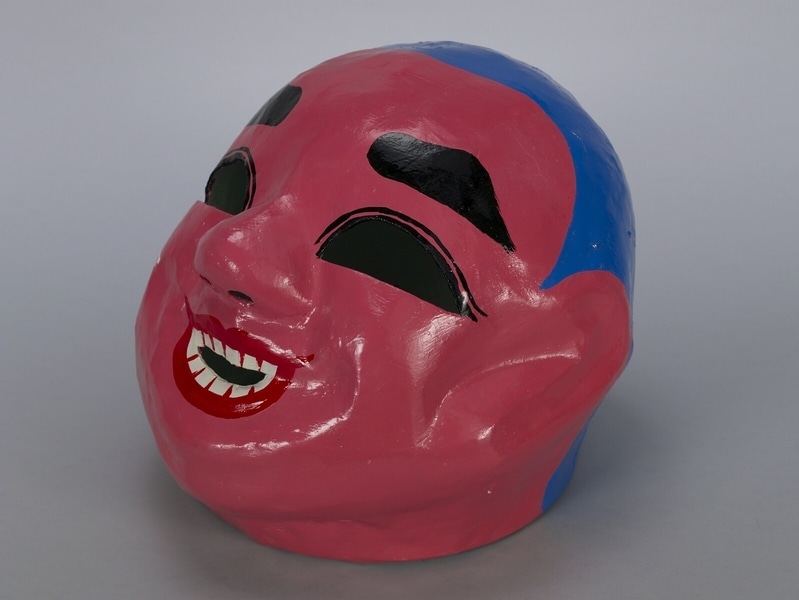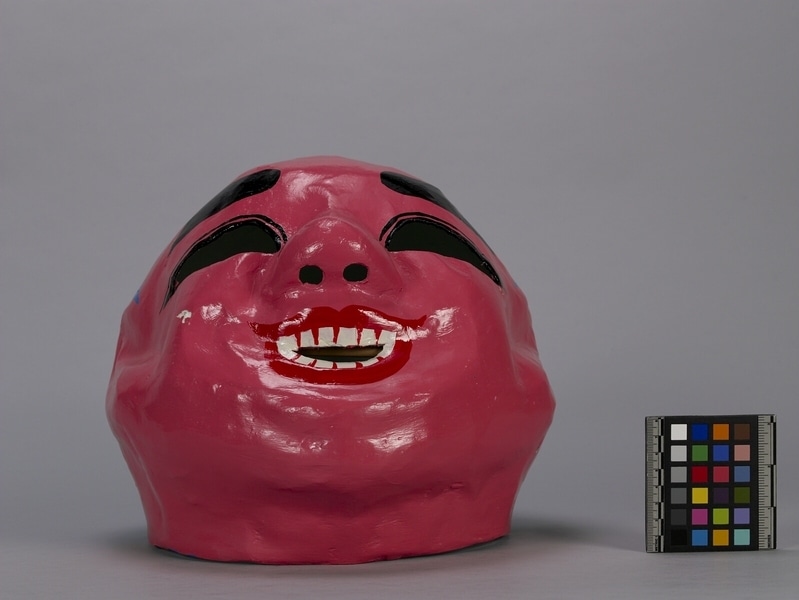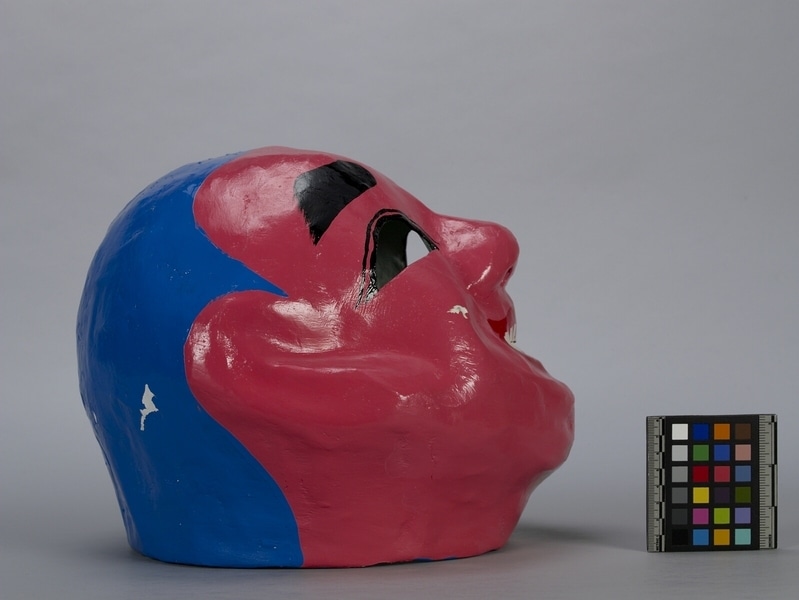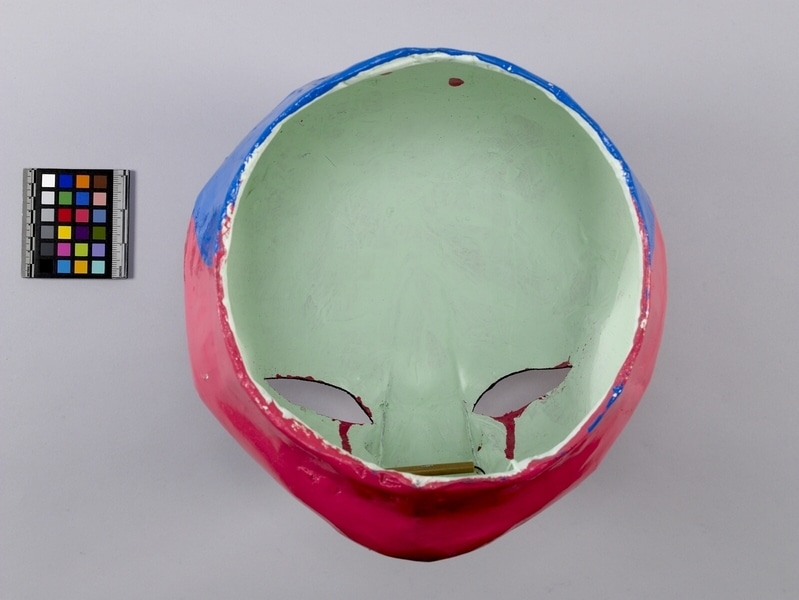Lion Dance Mask Item Number: 807/2 from the MOA: University of British Columbia




Description
Large mask with bright blue hair, bright pink face, large semi-circular cut-out eyes, large black painted eye brows, bulbous nose, small cut-out mouth with painted red lips and white teeth. A small bamboo rod is attached with metal wire to the inside of mask near the nose.
History Of Use
During a Cantonese lion dance, one dancer wears a mask representing a lion, dancing to the rhythm of drums, gongs, and cymbals done by the team. Dancing in front of the lion, and often poking at it with a fan made of a palm leaf, there is often a figure wearing this mask, called “daaih tauh faat”, or “big-headed Buddha”. Lion dances are performed at New Year, at the opening of new businesses, when buildings and renovations have been completed, and on other celebratory occasions. The lion or lions dance in front of the door above which is suspended a lettuce which the lion eventually “eats”, thereby taking possession of the red packet of money that is hung up with it.
Narrative
Lion dances are commonly done in Cantonese celebrations.
Iconographic Meaning
Lion dances are celebratory and auspicious, and the noise that accompanies them, often including firecrackers, is also considered to be lucky and protective, frightening away evil influences.
Item History
- Made in Vancouver, British Columbia, Canada during 1981
- Collected during 1981
- Owned by Elizabeth L. Johnson before May 14, 1982
- Received from Elizabeth L. Johnson (Donor) on May 14, 1982
What
- Name
- Lion Dance Mask
- Identification Number
- 807/2
- Type of Item
- mask
- Material
- paper, bamboo grass, paint and paste adhesive
- Overall
- height 26.0 cm, diameter 29.0 cm
Who
- Culture
- Chinese: Cantonese
- Previous Owner
- Elizabeth L. Johnson
- Received from
- Elizabeth L. Johnson (Donor)
Where
- Holding Institution
- MOA: University of British Columbia
- Made in
- Vancouver, British Columbia, Canada
When
- Creation Date
- during 1981
- Collection Date
- during 1981
- Ownership Date
- before May 14, 1982
- Acquisition Date
- on May 14, 1982
Other
- Condition
- good
- Accession Number
- 0807/0002